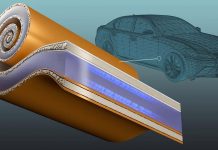
Imagine a world where the fear of a car crashing into a truck isn’t accompanied by the worst possible outcomes.
Researchers at Chalmers University of Technology in Sweden are bringing us closer to this reality.
They’ve created a new truck front design that significantly reduces the risk of serious injury or death in car-truck collisions.
This innovative concept emerged following changes in EU regulations that previously limited truck lengths.
These restrictions often led to designs that prioritized cargo space over safety. However, with the new rules in place, researchers saw an opportunity to rethink truck fronts for better crash protection.
Crash tests conducted by the Swedish Transport Administration (Trafikverket) revealed promising results.
The new truck front can decrease the amount of damage a passenger car suffers in a crash by 30-60%.
This means a dramatic improvement in safety for car occupants, potentially saving lives in accidents involving heavy goods vehicles (HGVs) and passenger cars.
Statistics are sobering, with 14 to 16% of car occupant fatalities in the EU and US involving HGVs. The design of current trucks often leads to severe crashes, particularly head-on collisions on rural roads or rear-end crashes on highways.
The challenge lies in the difference in size, stiffness, and weight between trucks and cars, making it hard for cars to come out unscathed in these encounters.
The Chalmers team, led by Professor Robert Thomson, sought to address this challenge head-on. Drawing from their extensive research and inspired by real-world crash observations, they designed a truck front aimed at better protecting both car passengers and truck drivers. Their solution?
A front made of aluminum honeycomb, a lightweight, energy-absorbing structure that provides a distributed force upon impact, making crashes less severe.
This innovative material is not new to safety research but applying it to truck fronts is.
By altering the thickness of the aluminum foil used in the honeycomb, researchers can adjust how the truck front absorbs energy during a crash, improving safety without sacrificing the truck’s functionality.
The Swedish Transport Administration’s tests were a success, demonstrating that the new design significantly reduces the impact on a passenger car in a crash.
Not only does this mean better protection for car occupants, but it also means less damage to critical parts of the truck, such as the steering and braking systems, enhancing overall road safety.
The long-term goal is ambitious but clear: to develop a standard for truck crash tests that could be included in consumer safety ratings by 2030.
The vision is a road system where passenger cars can survive a head-on collision with a truck, thanks to a design that ensures the car’s passenger compartment remains intact.
The collaboration between Chalmers University of Technology, the Swedish Transport Administration, and the automotive industry signifies a united front in the quest for safer roads.
The introduction of automatic emergency braking systems (AEB) in newer cars and trucks, which can reduce the speed of a vehicle before a collision, combined with the new truck front design, marks a significant step forward in vehicle safety.
As these efforts continue, the hope is that future roads will be much safer for everyone, making the dread of car-truck collisions a thing of the past.



